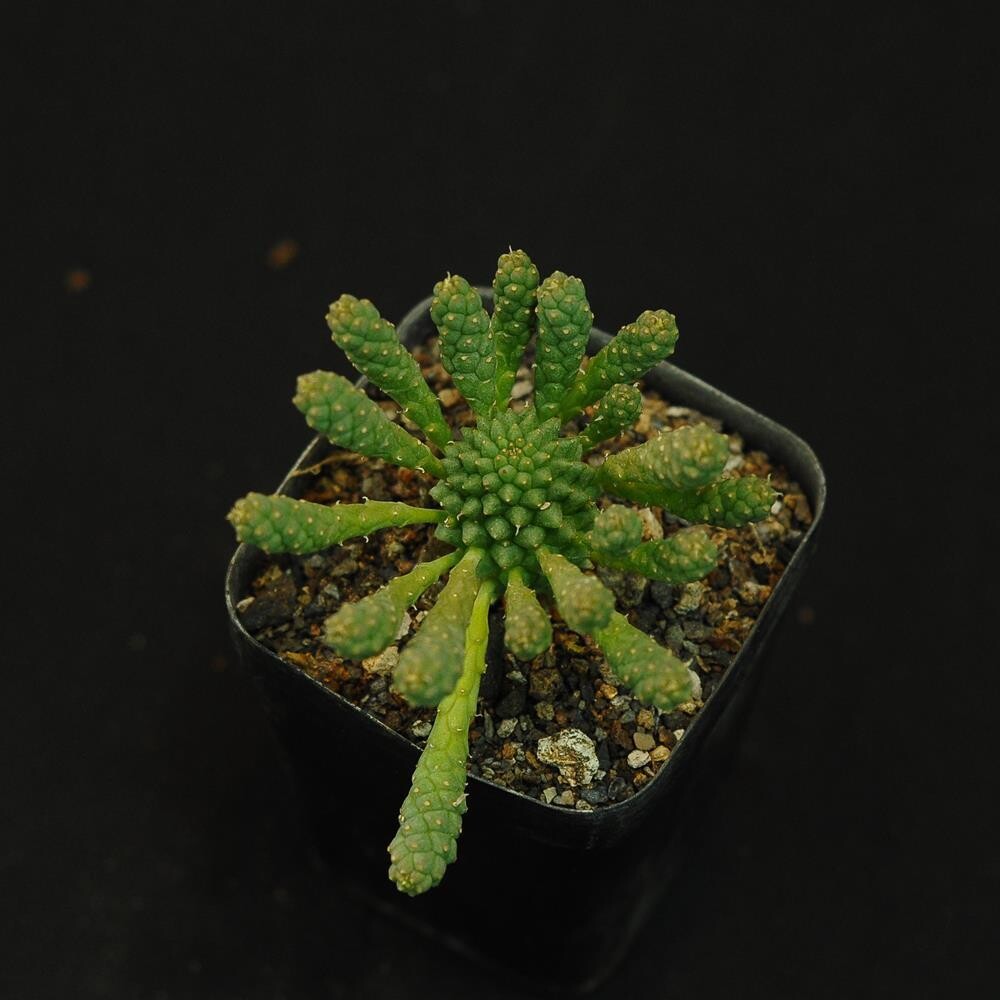Please check the Shipping Updates Page for information on shipping.
Euphorbia caput-medusae
Origin of Name
Euphorbia caput-medusae, known as Medusa's Head, derives its evocative name from the mythical Greek monster, Medusa, who had snakes for hair. This succulent's name reflects its unique appearance, with numerous snake-like stems radiating from a central base, mimicking Medusa's serpentine locks. The genus Euphorbia honors Euphorbus, the Greek physician to King Juba II of Mauretania, who is believed to have used a Euphorbia plant in his medicine. The species name "caput-medusae" literally translates to "head of Medusa," emphasizing the plant's distinctive morphology that captures the imagination and fascination of those who encounter it.
Technical Description of Plant
Euphorbia caput-medusae is a striking succulent that features a central, rounded body from which numerous slender, green, cylindrical branches extend in all directions, resembling the head of Medusa. These branches can grow up to 30 cm long and are segmented, with small spines along the edges. The plant’s surface is green with a slightly bluish or greyish tint, and it may produce small leaves that are ephemeral, often dropping off during dry periods. Flowers are small, yellow-green, and appear in clusters at the ends of the branches in spring or early summer. The plant's unique form and branching pattern make it a captivating specimen in any collection.
Origin of Plant
Euphorbia caput-medusae is native to the Western Cape Province of South Africa, where it grows in sandy soils and rocky outcrops in coastal areas. Its natural habitat is characterized by dry, arid conditions with infrequent rainfall, which has led to the plant's highly adapted succulent features for water storage and conservation. This species is a testament to the diverse and specialized flora of South Africa's Cape regions.
Conservation Status
While the specific conservation status of Euphorbia caput-medusae has not been formally assessed by the International Union for Conservation of Nature (IUCN), it, like many succulents, faces threats from habitat loss and illegal collection. Conservation efforts are vital for protecting the natural habitats of this and other succulent species, ensuring their survival in the wild. Sustainable cultivation and propagation in gardens and collections can help reduce pressure on wild populations.
Care Instructions
Euphorbia caput-medusae requires care that simulates its natural environment. It thrives in well-draining sandy or gritty soil, ideally in a cactus or succulent potting mix. The plant prefers full sun to partial shade, with more vibrant growth occurring in brighter light conditions. Water sparingly, allowing the soil to completely dry out between watering sessions, and reduce watering frequency during the winter dormancy period. This species is not frost-tolerant and should be protected from temperatures below 5°C (41°F). Fertilize lightly with a succulent fertilizer in the spring and summer growing season. Caution should be taken when handling Euphorbia caput-medusae, as its sap is toxic and can cause irritation to skin and eyes. With proper care, Medusa's Head can be a fascinating and otherworldly addition to any succulent collection, offering a touch of mythological beauty.
